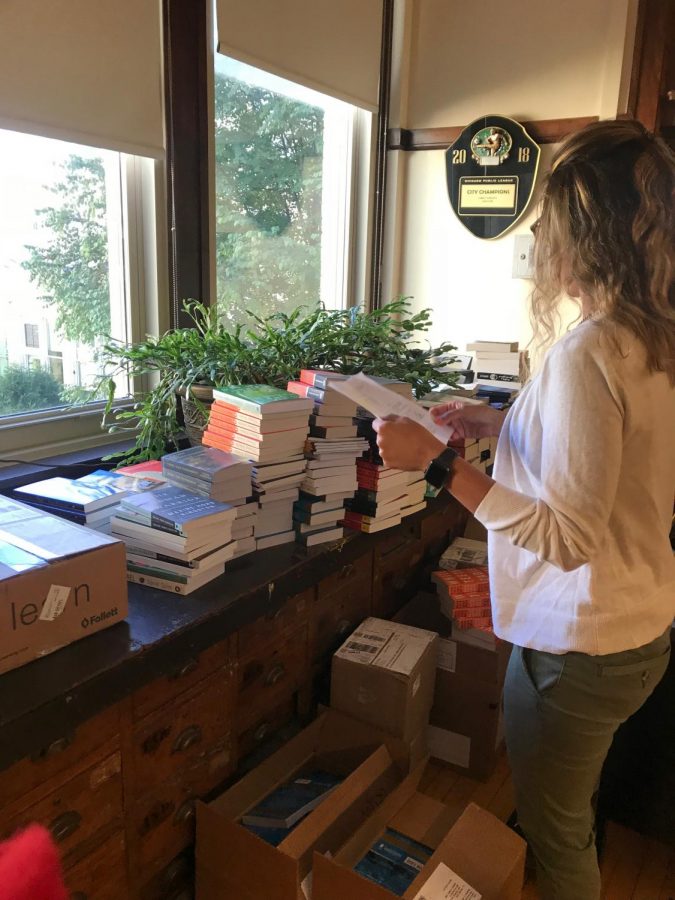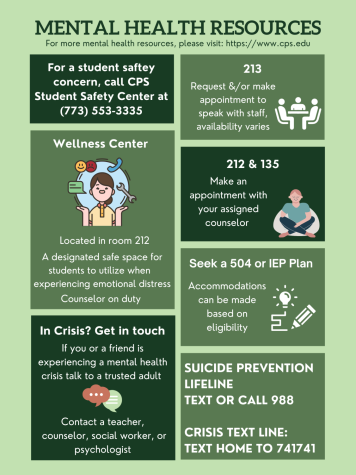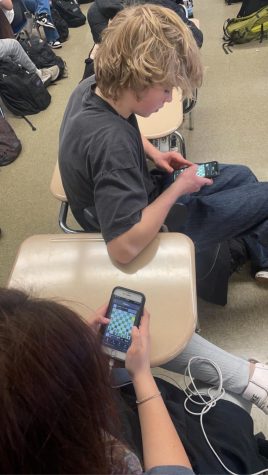The process of choosing an English book
Ms. Vale organizes through books for distribution to English teachers.
October 22, 2018
The book lies in front of you. You look at it with skepticism, thinking what does this have to do with my education? What am I learning? How is this going to apply to my education or my class?
Many students may wonder why the books we read are chosen, and why we are told to spend our time on specific pieces of literature.
Assistant Principal Ms. Edwina Thompson, whose administrative responsibilities include supervision of the English Department, has been part of the book selection process for many years.
“Across all English classes, teachers work in grade level teams, and there are a few selections they have in common where they can choose as a group what they want to cover,” Thompson said.
While teachers agree in grade level teams on one common book that they all teach their classes, the rest of the books are chosen by the teachers themselves. The books chosen are aligned with the current unit being taught in class.
Before teachers are allowed to teach a certain book, they have to get it approved.
Thompson said that rigor and appropriateness of the text are a few of the factors taken into consideration.
Ms. Vale, Chair of the English Department, said AP teachers have a lot of freedom in selecting texts for their AP courses.
While the College Board provides a list of recommended books and selection criteria, Vale said teachers can pick their own texts according to the units and course syllabus they have designed, all of which is aligned with the AP Exam.
The course syllabus must be approved by the College Board, through a process called the AP Course Audit. AP teachers send an extensive and specific syllabus to the College Board, where they make sure that the syllabus is aligned with the exam and AP curriculum guidelines.
Once the teacher submits the syllabus to the College Board, it is reviewed by college faculty members, who will provide suggestions on the syllabus as well as a decision within eight weeks. Once a teacher is approved through the audit process, they are able to teach the AP course, and also access practice tests, according to the College Board.
Vale stressed that texts should not only be rigorous, but that they also should not be repeated in another class or grade level.
As for non-AP English Classes, Lane is no longer titling English I, II and III under a certain literature. Before, English classes were linked to a certain type of writing (British, American, World) but the department has moved past that, giving teachers a wider range of books to choose.
“We are no longer giving the descriptive titles [British Lit, American Lit] and we are calling them 1, 2, 3, 4,” Vale said.
This allows for teachers to have a lot more freedom as to which books they want to choose, as they now look to link texts thematically rather than chronologically.
While classes used to be in chronological order, the wide range of book choice gives teachers the option to have units based on different themes. While, some teachers do pursue this opportunity, others still find it perfectly effective to structure the class chronologically.
Omitting the titles allows teachers who don’t prefer to structure their class chronologically to do so thematically, but teachers still have the option, of correlating their texts to a specific culture, and structuring the class chronologically.
For example, Ms. Laroche still teaches her Honors English 3 class chronologically.
And while teachers may link their units chronologically or thematically, all have in common the option of choosing books they want to read with a class.
Now if a teacher does want to choose their own book, they have to create necessary supplementary materials.
“If a teacher chooses something outside of the common texts, they would have to create their own curriculum units and assessments for those texts,” Vale said.
The readings that are referred to as common texts are books that are voted upon to be read by an entire grade level. These readings already have the supplemental materials prepared for them.
While teachers have freedom in selecting books, both Thompson and Vale stressed the importance of reading classic authors and literature.
“There are things we have to read,” Thompson said. “Shakespeare has to be read; it’s important that high schoolers learn how to analyze Shakespeare and his work.”
All juniors at Lane read “Macbeth” and all sophomores read “Catcher in the Rye,” which are classic pieces of literature read in high schools across America.
Ms. Laroche also noted that the cost of the book is taken in consideration, which leads to more classic literature.
“Contemporary books are more expensive than the classics,” Laroche said.
She hopes to use more contemporary texts in the future, as her students are very interested in reading modern material.
Laroche also said that the world today sometimes have an influence on the book being chosen.
“‘1984’ is ultra relevant — the language in that book is the language today,” Laroche said, on choosing why she choose to read “1984” compared to reading “Brave New World,” which was the book she usually reads with her class.
But all in all, across all English classes and electives this year, many books with different cultures, time periods, and themes are being read in different classes to help expose students to diverse readings.
‘I think that’s why we read, to learn more about the world around us and the world not around us, the world elsewhere. I think that is the value of reading literature is to learn about humanity,” Laroche said.







